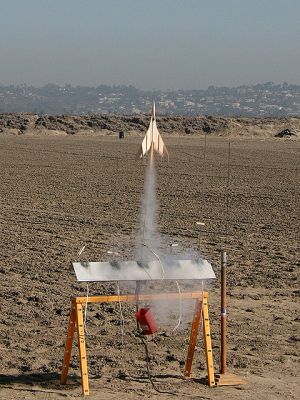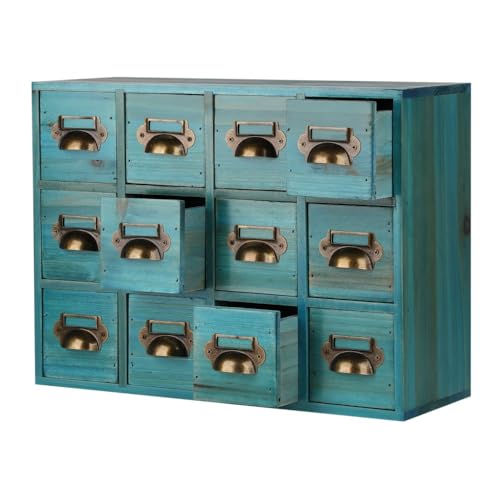| Construction Rating: | starstarstarstar_borderstar_border |
| Flight Rating: | starstarstarstar_borderstar_border |
| Overall Rating: | starstarstarstar_borderstar_border |
 Brief:
Brief:
Semroc's cc:X-21 is a rocket glider that is a modernized version of the Centuri X-21. Here is the original description for the 1964 Centuri catalog:
"Boost-glide aerospace vehicle! Exciting Performance! Advanced design! Plastic payload compartment! Controllable! Rocket powered flight straight up - hundreds of feet - then glide return for a soft landing. Successor to Centuri's famous Aero-bat, the X-21 is easy to build and can be launched many times. It can be controlled to maneuver left and right turns for ease of recovery. It's plastic payload compartment can be used to carry live biological specimens or light scientific instruments. Simply insert a new rocket engine, connect the automatic elevon release mechanism and the X-21 is ready for another flight. The completed model measures 18" from cone to stabilizer tip. Price: $2.75"
Construction:
Semroc has updated the components from Centuri's design from over 40 years ago. The most notable improvement is the inclusion of several sheets of laser cut fins versus the original blank sheets of balsa and printed templates. The other components in the kit are:

- 1 BT-20 Body Tube
- 1 BT-20 Clear Plastic Payload Tube
- 1 Balsa Nose Cone
- 1 Balsa Tube Connector
- 1 Balsa Bulkhead
- 1 Launch Lug
- 1 Tension Thread
- 1 Elastic Cord
- 2 Self Adhesive Hinge Strips
- 2 Control Stop Wires
- 1 Screw Eye
- 3 Nose Weight Washers
- 1 Supplemental Instruction Booklet
The original kit included a "release tab" that has been replaced with a straight pin, which must be supplied by the rocketeer.
All of the required parts were present, accounted for, and in good condition when I opened my kit. I was somewhat surprised that the instructions were only supplemental ones and that the original Centuri instructions needed to be downloaded and followed. The original instructions are available at Ye Olde Rocket Plans and are downloadable free of charge.
Semroc's booklet is clear and well written with a nice exploded diagram. The scan of the Centuri instructions is a bit uneven and the original typeface is somewhat small and difficult to read. There is a exploded diagram of the kit and a couple of illustrations but that's it. If you have trouble following along with an illustration on every step in the instructions of the large rocket kit producers, this probably isn't the kit for you.
The first step to the kit is to remove the many, many fins from the balsa carrier sheets from which they are cut. Though very thin and lightweight, the balsa was good quality, nice, and stiff. A light sanding was all it took to remove the laser charring from the edges of the balsa parts.
The wings come in a few different sections that are glued flush to each other. As the wings are drying, the motor block/bulkhead is glued in place. After the wings have dried, the elevons are adhered on. The kit includes self-adhesive strips for this purpose, but I didn't use them. In the past with kits from other companies, I have had trouble getting a good, permanent bond with this type of strip to balsa. After a bit of trial and error experimentation, I have settled on using Monokote and a tacking iron to make all the hinges on my boost/rocket gliders. The X-21 got this treatment and now has very nice plastic hinges that are light and durable.
One of the cooler things about this kit (as well as the original) is that it has a wing alignment jig to make sure that you get the large wings aligned to the airframe properly. After assembling the jig, the body tube rests in a channel as the wings are glued to it and allowed to cure. Once this is completed, the wing roots are reinforced with additional strips of balsa. This produces a much thicker root and a much sturdier wing. From the roots we move next to the wing tips. The stabilizers are glued on next with the aid of a balsa alignment guide. This second jig isn't quite as handy and the first, but it still makes getting the tips aligned properly a snap. Following the wing assembly, the launch lug is bonded in place.
Next is the most confusing section of the instructions, the "automatic elevon release mechanism". After reading through this section several times, I was still left scratching my head. Thank goodness for the internet and the online rocketry community. I would have never pictured the release system that the X-21 uses. The next step is to tie on the tension thread and the elastic cords to the elevons and to tie the straight pin in the middle of the release thread. I'll explain the way the mechanism works in the flight section below.
After this, the payload section is assembled by gluing the payload section connector into the front end of the body tube and then the clear plastic payload tube is glued to that. The nose cone is merely friction fit so that the glider can be trimmed by adding or removing the included washers. The canards are adhered to the payload tube not with the original sticky strips but with super glue. This produces a sturdy bond that was unavailable when the kit was first released!
The final step in the assembly is to glue the control stop wires in place at the wing tips so that the pitch of the elevons can be changed to change the profile of the flight.
Finishing:
I decided to not do any finishing on my X-21 other than a good smooth sanding with 220 grit sandpaper. The Monokote that I used for the hinges added a bit of color, but I didn't want to add the extra weight of paint and primer to the glider.
The other kind of finishing required with the X-21 and all gliders is trimming. The supplemental Semroc instructions recommend starting out with 2 washers for nose weight. I tried several hand throws this way and tried a couple with 3 washers as well. But in the end, I decided that I would go with 2 washers for my first powered flight.
I'm rating the X-21 only a 3-1/2 not for anything that Semroc has done with the kit but for the original instructions. If Semroc would rewrite Centuri's two pages of instructions and throw in a few more illustrations for clarification of the release mechanism, it would go a long way towards getting a 4 or 4-1/2!
Construction Rating: 3 out of 5

Flight:
I decided to make my first flight with the motor in the middle of the recommended power range, the A8-3. Prepping the X-21 for flight is a piece of cake. The new motor is loaded into the tail as you would expect. I added a bit of masking tape for a little more snug fit as the casing was sliding out the back when the model was inverted. Next, the straight pin is inserted into the gap between the body tube and the engine. The elastic cord is then looped over the launch lug to tension the elevons. By wrapping the tension thread around the straight pin several times, enough tension can be produced to pull the elevons (mostly) flat. I added a drop of super glue to the bundle of thread to keep it adjusted. Be careful not to permanently glue the pin to the engine casing.
As I was unable to get the elevons to stay perfectly flat, I expected the model to arc on boost. I positioned it carefully on the pads so that this would happen away from the flight line if it did occur. I had a little bit of trouble getting the straight pin to stay in place with all the tension that was on it from trying to pull the elevons straight but finally got it to stay in place well enough to get it on the pads and connected to the launch system.
After a heads up call to the assembled crowd (why is it always my rockets that get these?) the X-21 took flight. It did arc over a bit as it boosted to a modest height. The large wings and stabilizer tips create a lot of drag, so I wasn't expecting a super high flight.
The second and third flights of the X-21 had nearly identical flight profiles as the first. Slow boost, arcing over. The third flight I could tell the point that the tension thread burnt through as the elevons activated and the rocket looped harder.
Recovery:
At ejection, the casing spit out and the glider went into a steep dive. The first flight was not a huge success. It looks like the gentle hand tosses that I had made were not a completely true indicator of how the X-21 would fly under power.
After recovering the model, I found that the nose cone had been dented a bit from its hard landing and that the tension thread had been burnt through by the hot gases of the flight. This made additional flights not possible without returning to my workbench for more thread. I have replaced the original tension thread with 40lb test fishing line. I hope that this will hold up better to the heat produced by the rocket engine. I will be taking the spool of line with me to the next launch though!
The second and third flights were much better glides. I removed one of the nose weight washers and allowed the elevons to move through their full throw. The second flight charred the tension line again but not all the way through. On the third flight, the tension line burned through on boost. The rocket started to loop close to burn out and looped again when the casing kicked out.
The series of flights caused progressively more burned area on the elevons next to the motor, pitting the balsa badly after the third flight.
Flight Rating: 3 out of 5
Summary:
While Semroc charges a bit more than $2.75 for their version of the X-21, I think it is worth it. This is an unusual configuration for a rocket glider and an interesting build. I'm not totally sold on the elevon release mechanism with its tension thread and straight pin but it works. If a different system possibly more like the one of the contemporary of the X-21, the Estes Space Plane, could be implemented I think that this kit would be great!
The only factor that I would consider a con of the kit is the Centuri instructions. As I stated previously, these are the one area that Semroc hasn't modernized that should be done.
Overall Rating: 3 out of 5
Other Reviews
- Semroc cc: X-21 By Mike Kordik
The Semroc cc:X-21 is a boost glider with an elastic cord that pulls the elevons up to shift into glide mode after the motor is ejected. The kit inlcudes 1 body tube with a clear payload section and a balsa nosecone. This is a glider with broad swept wings. There is an elastic cord that pulls the elevons up but you also have a stiff string that is anchored in between the motor mount and ...
Sponsored Ads
 |
 |












